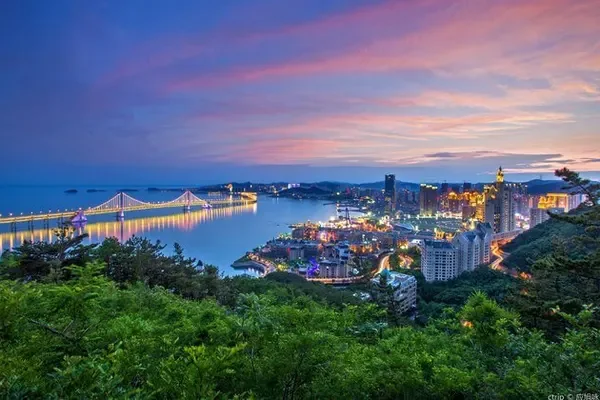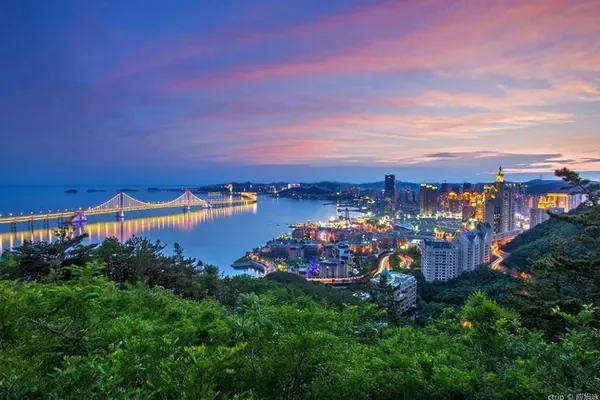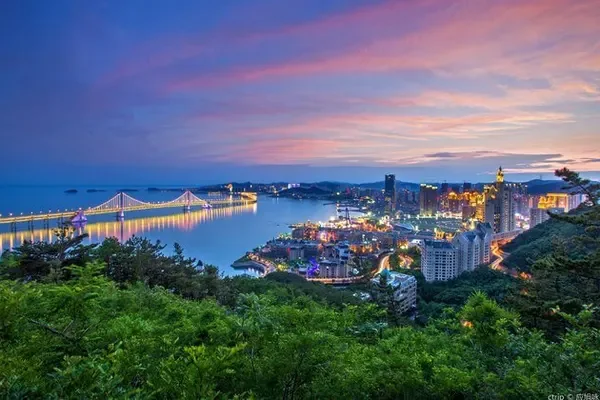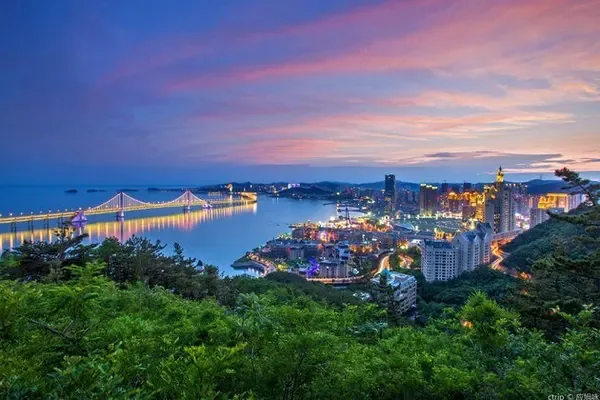With whom: friends
Accommodation: Unnamed Courtyard Hotel
Accommodation strategy: When traveling in Beijing, you must stay in a hotel in the city center. It is relatively close to various scenic spots in Beijing. It is best to be a place of interest and historical sites, which is more convenient for sightseeing. If you combine eating, drinking and entertainment, then this place is more perfect, so I chose a courtyard hotel in Nanluoguxiang, called Weiming Courtyard Hotel, which is quite a unique courtyard hotel. The three-hundred-year-old courtyard hotel in the middle of the Qing Dynasty is very beautiful and elegant. map bar






Step 1 Old Hutong - Qianmen Street - Tussauds
Because I didn't expect that I followed the navigation around the small alley again and again. When I encountered a fork in the road, I also held the idea of men left and women right, and resolutely walked to the right, and then I started to go around in circles. It took 25 minutes for a ten-minute journey, but fortunately, I finally met Miss Wan.
She used to be a famous prostitute who moved the public officials. She once helped General Cai E escape from Yuan Shikai's house arrest, and was praised for her unswerving love with Cai E. In the 1980s, this love was filmed as "Friends" movie of. Listening to the rickshaw master speaking in a Beijing accent and introducing the history of the hutong, my willingness to explore the old hutongs in Beijing has deepened.
At first glance, all the hutongs in Beijing look the same, with gray walls and gray tiles. In fact, as long as you are willing to work hard, connect a few alleys, and chat with the old residents there for a while, you will find that every alley has a storyteller, a story, and a legend Such an experience, there are many anecdotes in it. And although the alleys are narrow, life is very interesting.






The Madame Tussauds in Beijing is quite interesting. It was the first time for me to get in touch with stars at close range. Although they are not immobile, they are really very realistic.
Step 2 Tiananmen - Forbidden City - Nanluoguxiang
In order to watch the Tiananmen flag raising, Ms. Wan and I got out of bed early at 4:30, packed our luggage (because we were going to stay in another hotel the next day), and before we had time to eat breakfast, we hurriedly rode our bicycles to Tiananmen Square. But unfortunately, because we are not familiar with the road conditions in Beijing, we did not catch up with the flag raising. After we passed the security check, the two of us started to shoot wildly in the square.
Tiananmen Square is located in the center of Beijing, the capital of the People's Republic of China, at the southern end of the Forbidden City. It faces Tiananmen Square, the Monument to the People's Heroes, the Chairman Mao Memorial Hall, the Great Hall of the People, and the National Museum of China across Chang'an Street. It covers an area of 4,800 square meters. It has attracted the attention of the world with its outstanding architectural art and special political status.
Tiananmen is the main gate of the Beijing imperial city during the Ming and Qing dynasties. It was first built in the 15th year of Yongle (1417) in the Ming Dynasty. It was originally named "Chengtianmen", which means "to inherit the fortune of the sky and to be ordered by the sky". The Bing Gemen on the square stood straight and straight, giving everyone an inexplicable sense of security.

Because the Forbidden City didn't open until 8:30, after looking at the time, we decided to visit Zhongshan Park next to the Forbidden City.
Zhongshan Park is located in the south of the Forbidden City (Forbidden City) in the center of Beijing, on the west side of Tiananmen Square, separated from the Forbidden City by a wall. Covering an area of 230,000 square meters, it is a commemorative classical temple garden. [1] It was originally the Sheji Altar of the Ming and Qing Dynasties, and it was built together with the Taimiao (now the Working People's Cultural Palace) following the ritual system of "Zuo Zu You She" since the Zhou Dynasty.
In 1925, Mr. Sun Yat-sen passed away, and the coffin was parked in the worship hall (now Zhongshan Hall) in the garden, and a public sacrifice was held. To commemorate this great pioneer of the democratic revolution, it was renamed Zhongshan Park in 1928.




Tickets for Zhongshan Park are really cheap. The two of us used our student ID cards to pay three yuan to enter the park. The tulips inside were in full bloom and the air was fresh. I saw many people doing morning exercises. This way of life may be the one I most yearn for. Seeing that the time was about the same, the two of us went to the entrance of the Forbidden City and started queuing up, preparing to enter the park early to avoid the large forces.








I am addicted to the eaves and cannot extricate myself.

When I arrived at the gate of the Palace Museum, I realized that the Forbidden City in Beijing and the Forbidden City in Shenyang are really different. Although they are all palaces, the Forbidden City in Beijing may have more historical precipitation.
The Forbidden City, also known as the Forbidden City, is laid out in strict accordance with the feudal hierarchy of etiquette and orderly. Not only can ordinary people not enter, they cannot even get close to it, which reflects the supreme imperial power in the feudal era.
At a height of more than ten meters above the Meridian Gate, there is Chonglou, with double eaves and pointed pavilions protruding like five phoenixes with wings ready to fly.
There is a wall around the Forbidden City, surrounded by a moat outside the wall, forming a complete defense system of the Forbidden City, which reflects the wisdom of the ancient working people in our country.
Walking through the Inner Jinshui Bridge, there is an open square in front of you, with a palace-style building in the middle, which is the Taihe Gate, with a majestic bronze lion squatting on both sides of the gate.
The Hall of Central Harmony is the place where the emperor rested before going to the Hall of Supreme Harmony and received worship from deacons and officials. In the center of the hall, there are four big characters "Yun Zhijue Zhong". The beasts are all made of gold, glittering and majestic.
A huge stone carving in the middle of the back steps of Baohe Hall is very eye-catching. This is the famous Yunlong stone carving. The interplay of pearls makes people think about it.
Whenever it rains, the rain falls on the three-story platform on which the three halls of Taihe, Zhonghe and Baohe stand. It forms a spectacular scene of thousands of dragons spitting water.




The imperial garden is an evergreen garden landscape in all seasons, and it was a place for emperors, queens and concubines to rest and play in ancient times. In the garden, you can occasionally see a few pavilions with beautiful landscaping, hidden among the green trees. On the ground, you can see the symbolic patterns of Fu, Lu and Shou made of pebbles, including flowers, figures, dramas, etc. colorful. There are many strange-shaped stones and various bonsai in the garden. Green pines, cypresses, bamboos, etc. grow among the stones, swinging in the wind and swaying in various poses. Among them, there are many old cypresses and pagoda trees, but they are luxuriant, like giants who have survived the wind and rain, witnessing the rise and fall of the Ming and Qing dynasties.
We swam around the Forbidden City for a long time, but in the end we were too tired, and we left the Forbidden City without finishing the East Palace. We rode a small yellow car around the perimeter of the Forbidden City before returning to our hotel. With our luggage, we took the subway to our next place of accommodation.
Step 3 Nanluoguxiang
The second hotel is very characteristic of Beijing, it is a courtyard. We dragged our luggage all the way, and found our hotel with all kinds of twists and turns. As soon as I opened the door, I was surprised by a room full of foreign friends. Their procedures were a bit troublesome. After waiting for a long time, we both checked in. We were going to take a nap and take a rest, and went to Nanluoguxiang for a stroll in the afternoon.







Nanluoguxiang is an alley located in the Jiaodaokou area on the east side of the central axis of Beijing. It starts from Gulou East Street in the north and reaches Ping'an Street in the south. It is 8 meters wide and 787 meters long. It was built at the same time in Yuandadu.
Since the Ming and Qing Dynasties, it has been a "rich area" where many dignitaries and celebrities have lived, from generals of the Ming Dynasty to princes of the Qing Dynasty, from the president of the Beiyang government to the president of the Kuomintang, from literary masters to painting giants, every alley here All left traces of history.
People who miss old Beijing in Nanluoguxiang like this place because it has the most authentic flavor of Beijing. From the generals of the Ming Dynasty to the queens of the last Qing Dynasty, from the masters of literature to the masters of the painting circle, every house here has countless romantic figures. ;Foreigners with blue eyes and white skin like this place, because it has their usual elegant atmosphere and romantic feelings. It makes people fascinated infinitely.
Outside the door is the dust and smoke of the old Chinese alleys, and inside the door is the familiar Blue Mountain coffee and gin. Seemingly seamless, you seem to wander in the interlaced time of ancient and modern, and feel the passionate collision of tradition and fashion in the space where Chinese and Western walls are combined. It's so contradictory, yet incredibly harmonious. People can't help but sigh, it turns out that Beijing can be so leisurely.
Step 4 Royal garden - the Summer Palace
The next day we took the subway for more than an hour and arrived at the Summer Palace.
Because we are working on the outer ring road, I thought it would be a "land where birds don't lay eggs" when I got off the subway, but when I got off the train, I found that it was not much different from the central city, with complete infrastructure and convenient transportation.
We rode a small yellow cart to the east gate of the Summer Palace, followed the large group into the garden.
The first one to enter was the theater of Empress Dowager Cixi.


Fortunately, we came across a theater performance. The sound of chime bells is really fascinating, and the audience can't extricate themselves for a long time. Next we took a cruise around Kunming Lake.






Longevity Mountain stands majestically on the shore of Kunming Lake, forming a beautiful reflection in the lake. There are all kinds of trees all over the mountain, and all kinds of pavilions and pavilions are indistinct. You can enjoy the cool in the shade of the trees, or sit quietly under the pavilion to enjoy the scenery. Looking at the plants, trees, pavilions and pavilions in the garden, you will have a different mood. Standing in front of the Sea of Wisdom on the top of Longevity Mountain, staring up and down at this colorful Buddhist temple, you will marvel at how exquisite the thousands of glazed Buddhas are carved on the walls outside the temple.

Kunming Lake is located in the Summer Palace in Beijing, and its area is about three-quarters of the total area of the Summer Palace. It was originally a natural lake formed by many springs in the northwestern suburbs of Beijing. It used to have names such as Qililuo and Dabo Lake. The predecessor of Kunming Lake was called Wengshan Lake, which was named Wengshan Lake because of the name of Wengshan Mountain in the predecessor of Longevity Mountain. Wengshan Boyin is located in the western suburbs of Beijing, also known as the West Lake. Kunming Let it rain, just wait for the sun to clear for three thousand years, the lake is still undisturbed, so I forget the spring has been taken; the catkins shake lightly, the wind keeps talking, the lake is left in the air, and the heart of love does not return.
We entered the north gate from the east gate of the Summer Palace, and took the subway back to the city center. Ready to go to the Bell and Drum Tower next.
Step 5 Bell and Drum Tower





Beijing Bell and Drum Tower is a group of ancient buildings located at the northern end of the north-south central axis of Beijing, at the northern end of Di'anmenwai Street, Dongcheng District, Beijing. Because the two of us are independent travelers, we have been following the English explanations of foreign tour guides along the way of the Bell and Drum Tower.
The Bell and Drum Tower in Beijing was first built from the Yuan Dynasty to the ninth year of the Yuan Dynasty. At that time, it was located in the center of the metropolis. In the eighteenth year of Ming Yongle (AD 1420), the Bell and Drum Tower was rebuilt, and its position at the northern end of the north-south central axis of the capital was established. After that, they were destroyed by fire one after another. In the eighteenth year of Jiajing (1539), the Drum Tower was struck by lightning and caught fire, and it was rebuilt for the third time. In the tenth year of Emperor Qianlong's reign (1745), the Bell Tower was rebuilt again. The Bell Tower and Drum Tower were restored in the Qing Dynasty. The Drum Tower seen was built in the Ming Dynasty, and the Bell Tower was built in the Qing Dynasty.
The Bell and Drum Tower is located at the northern end of Di'anmenwai Street, Dongcheng District, Beijing. The two buildings are arranged vertically at the front and back, with a distance of 100 meters, which has changed the traditional clock system, and is located at the northernmost end of the north-south central axis of Beijing, which is unprecedented.
The hutongs and courtyard residential areas formed by the Bell and Drum Tower and the surrounding areas have become an important part of the ancient capital, carrying a large amount of historical and cultural information, representing the folk culture characteristics of an era, and having unique humanistic values. "Evening Drum and Morning Bell" has become the memory of old Beijing for citizens, and the bell and Drum Tower have become symbols of "Old Beijing" in people's minds.
The two of us went very coincidentally, and we ran into a drumming performance. The drummers were four men and one woman. The men wore white clothes and red trousers, and the women wore red clothes. There is a big drum in the middle, and you can feel the shock, excitement and crossing. The performance time is approximately five minutes. There are 7-8 performances here every day, and you can usually see them.
After the trip to the Bell and Drum Tower, the two of us went back to the small inn to rest, and this time the trip came to an end.
For the exploration of a city, I think just a few days is not enough, but these few days also made me fascinated by Beijing, a bustling city intertwined with modernity and history. Beijing accent attracts.



